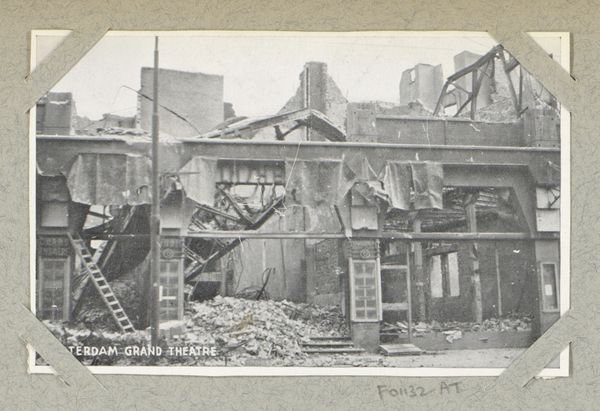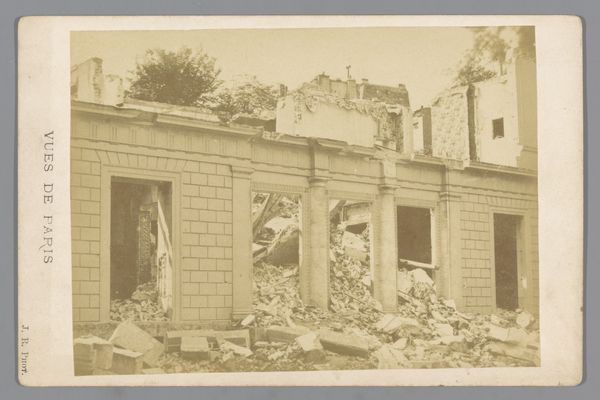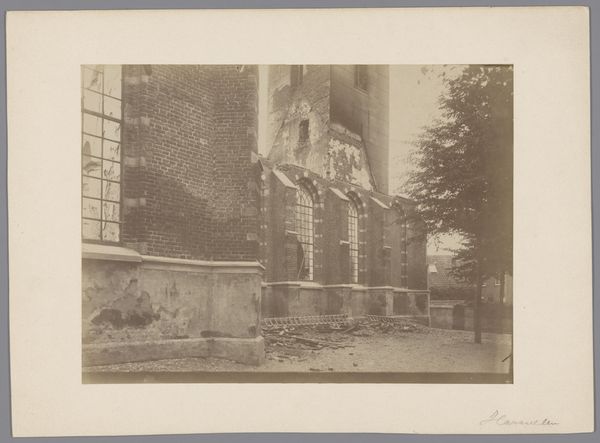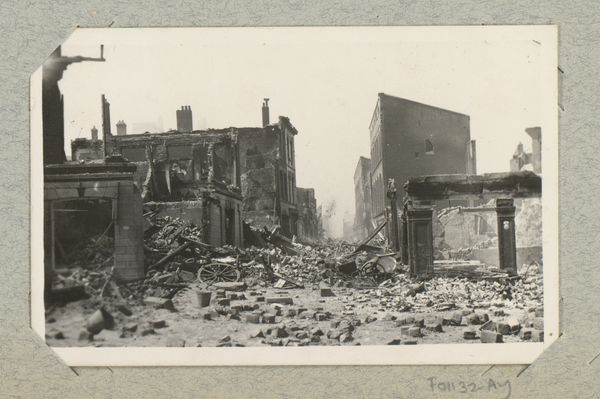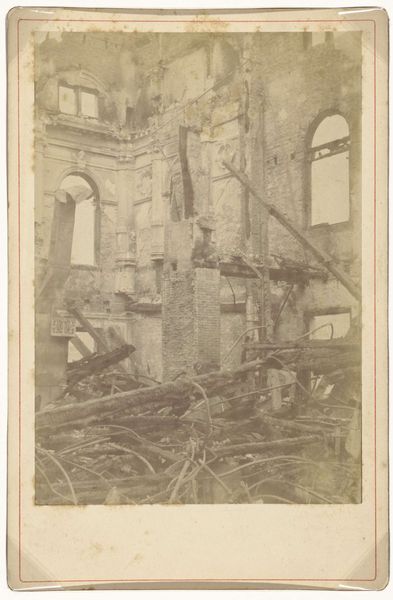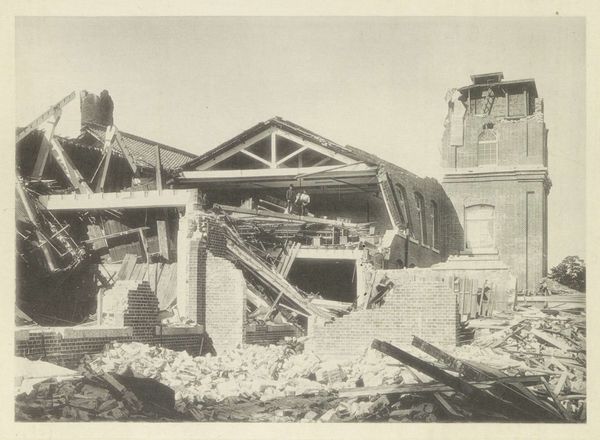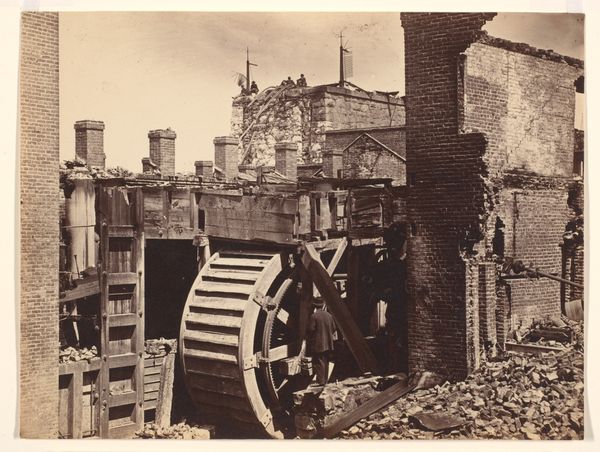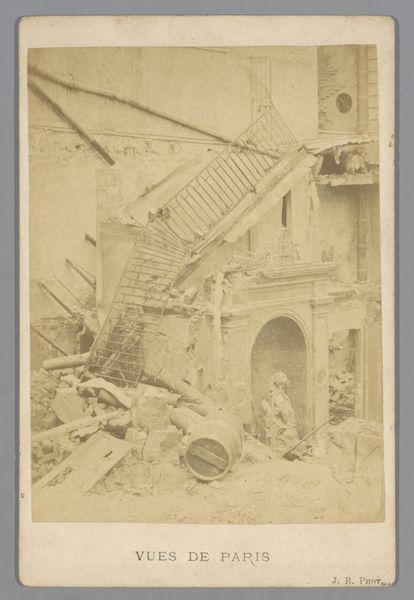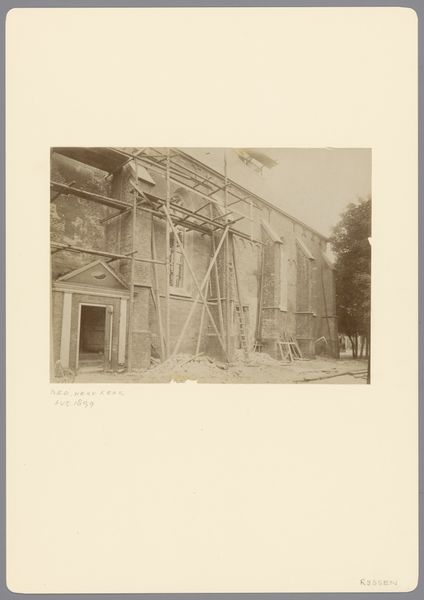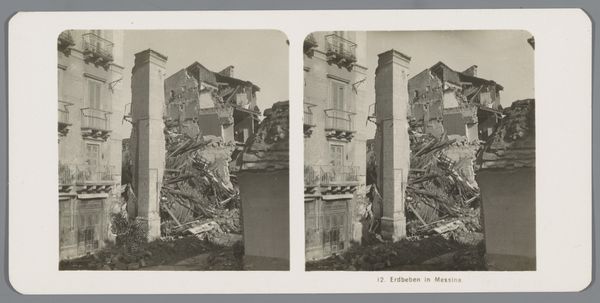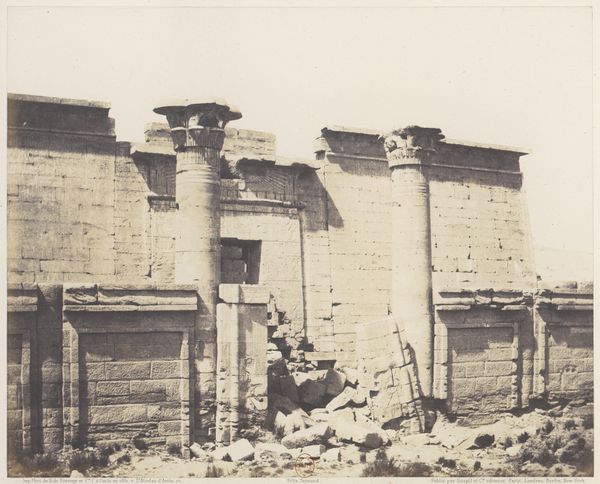
Dimensions: height 9 cm, width 14 cm
Copyright: Rijks Museum: Open Domain
Editor: So, here we have "Borculo—After the Cyclone of August 10, 1925" by Weenenk & Snel, a gelatin-silver print. It depicts, well, utter devastation. What strikes me is the sheer rawness of it—the exposed brick, the collapsed roof. It feels less like a document and more like…a wound. What do you see in this image? Curator: A wound, exactly. That’s a powerful reading. To me, it’s a meditation on fragility. We look at these buildings, especially religious structures, as emblems of permanence. Unshakable. And then… wham! A reminder that nature bats last. But even amid destruction, the photograph isolates textures and shadows: brick, wood, and a patch of defiant sky, almost hoping, reaching, into what's been laid bare. Does that vulnerability suggest anything else to you? Editor: Definitely, I see a kind of reluctant beauty. You know, that almost-too-pretty quality decay can have? The way the light catches on broken edges, the interesting geometric shapes the rubble creates... Curator: Reluctant beauty! I adore that! It speaks to the power of art to transmute horror into something… bearable. Like kintsugi, repairing breaks with gold. Editor: I hadn't thought of it like that! Now I wonder about the choice of gelatin silver. Was it simply the standard for the time, or was there something about its tonal range that spoke to this particular scene? Curator: Perhaps. Gelatin silver offers incredible detail and subtle gradations. It lends an air of both stark realism and mournful elegance. I mean, even disasters are open to beauty, right? Editor: Absolutely, seeing it as a balance between reality and artistry reframes it entirely. Thank you for pointing that out! Curator: And thank you for making me see those broken edges with fresh eyes! It's about looking beyond the ruins to see art reclaim a disaster with honesty.
Comments
No comments
Be the first to comment and join the conversation on the ultimate creative platform.
